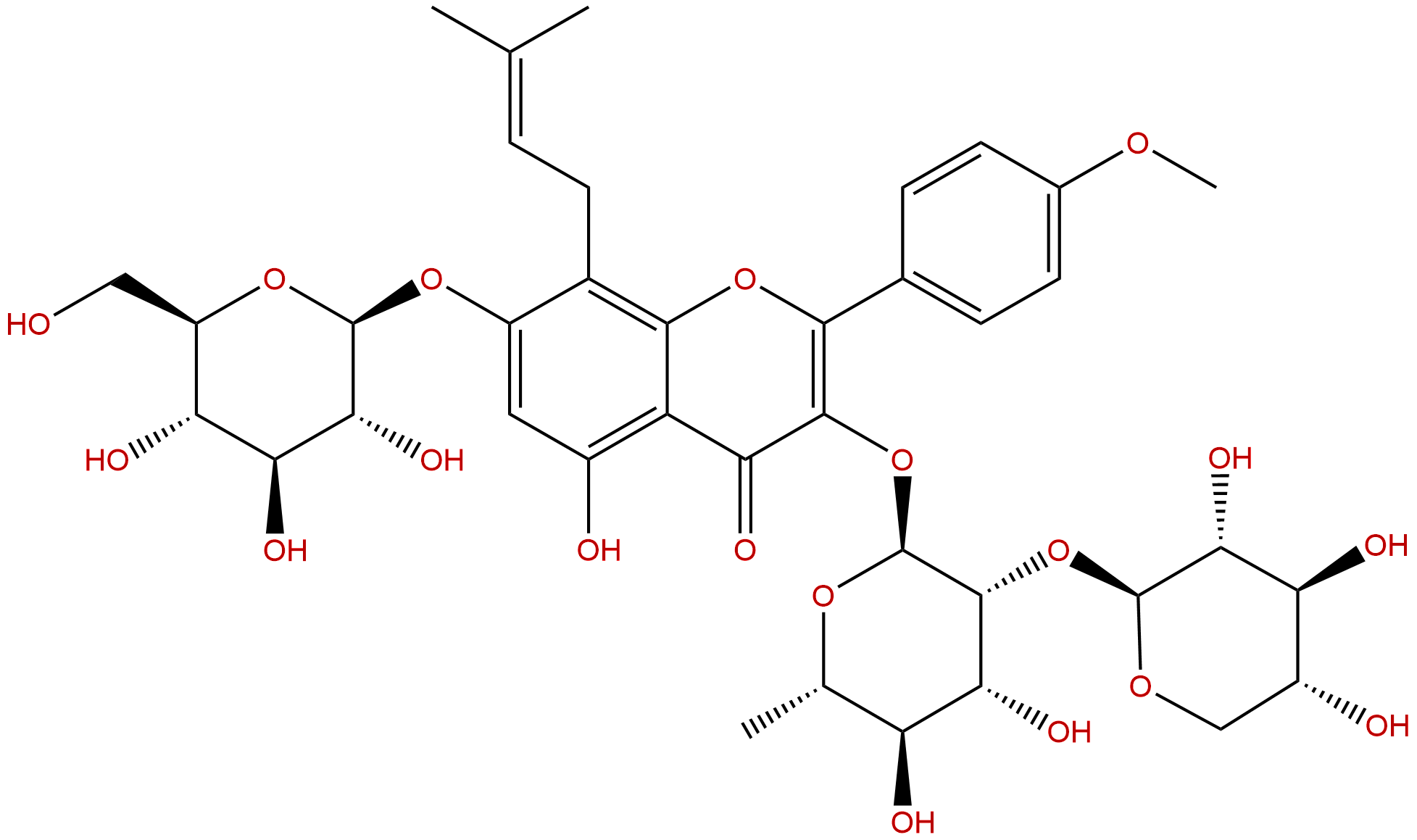
Epimedin BCAS No.:110623-73-9 |
||||||||||
 |
|
|
||||||||

| Catalogue No.: | BP0546 |
| Formula: | C38H48O19 |
| Mol Weight: | 808.783 |
| Botanical Source: | Epimedii folium |
Synonym name:
Catalogue No.: BP0546
Cas No.: 110623-73-9
Formula: C38H48O19
Mol Weight: 808.783
Botanical Source: Epimedium spp. and Vancouveria hexandra
Purity: 95%~99%
Analysis Method: HPLC-DAD or/and HPLC-ELSD
Identification Method: Mass, NMR
Packing: Brown vial or HDPE plastic bottle
Can be supplied from milligrams to grams.
For Reference Standard and R&D, Not for Human Use Directly.
Inquire for bulk scale.
Description:
Epimedin A,epimendin B, epimendin C, icariin and baohuoside are flavonoids, main active ingredient in Epimedium, have clear anti-osteoporosis effect, the accumulation of epimedins A, B, C, and icariin in a traditional medicinal plant could be suppressed by light stress.
References:
Acta Physiol Plant, 2013, 35(11):3271-5.
Light stress suppresses the accumulation of epimedins A, B, C, and icariin in Epimedium, a traditional medicinal plant.
Epimedium is well-known in China and East Asia due to high content of flavonoid derivatives, including icariin, epimedin A, Epimedin B, and epimedin C, hereafter designated as bioactive components, which have been extensively utilized to cure many diseases. So far, the molecular mechanism of the bioactive components biosynthesis remains unclear.
METHODS AND RESULTS:
In the present study, the effect of light stress (24 h illumination) on the accumulation of bioactive components and the expression of flavonoid genes in Epimedium was investigated. Under light stress, the structural genes CHS1, CHI1, F3H, FLS, DFR1, DFR2, and ANS were remarkably up-regulated while CHS2 and F3′H were significantly down-regulated. For transcription factors, the expression of Epimedium MYB7 and TT8 were increased while Epimedium GL3, MYBF, and TTG1 expression were depressed. Additionally, the content of bioactive components was significantly decreased under light stress.
CONCLUSIONS:
Our results suggested that the decrease of bioactive compounds may be attributed to transcripts of late genes (DFRs and ANS) increased to a higher level than that of early genes (FLS and CHS1).